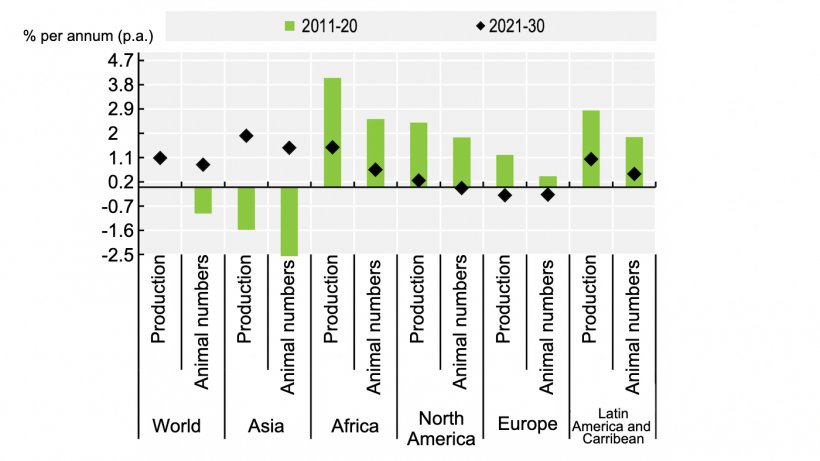Pigmeat output is projected to rise 13% to 127 million metric tonnes (Mt) by 2030, up from an ASF-reduced base level in 2018- 2020. The ASF outbreak across Asia will continue to affect many countries in the early years of the outlook period, with China, the Philippines and Viet Nam suffering the greatest impact. It is projected that ASF outbreaks will continue to keep global pigmeat output below previous peak levels until 2023, after which it is expected to steadily increase over the remainder of the outlook period. This Outlook assumes that pigmeat production in China and Viet Nam will start to increase in 2021 and attain 2017 levels by 2023. Most of the pigmeat production increase in ASF-affected regions will be the result of a shift away from backyard production facilities to commercial production facilities. Pigmeat production in the European Union is projected to decrease slightly as environmental and public concerns are expected to limit its expansion. Russia, the fourth largest pigmeat producer, has almost doubled output in the last decade in response to import bans and domestic policies to restructure and stimulate production. It is projected to expand production by a further 10% by 2030.
Global pigmeat consumption is projected to increase to 127 Mt over the next ten years and to account for 33% of the total increase in meat consumption. On a per capita basis, pigmeat consumption is expected to marginally increase over the outlook period while its consumption declines in most developed countries. In the European Union, for example, it is projected to decline as changes in the composition of the population influence diets that will favour poultry to pigmeat; the former is not only cheaper, but perceived as a healthier food choice. In developing countries, per capita consumption of pigmeat, which is half that in developed countries, is expected to marginally increase over the projection period. Growth rates are sustained in most of Latin America, where per capita pigmeat consumption has grown rapidly, backed by favourable relative prices that have positioned pork as one of the favoured meats, along with poultry to meet rising demand from the middle class. Several Asian countries, which traditionally consume pork, are projected to increase consumption on a per capita basis once the impact of ASF wanes.

July 5, 2021/ FAO.
http://www.fao.org/








